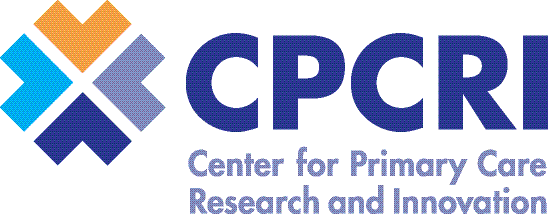This piece was originally published in the Oregon Academy of Family Physicians Winter 2020 magazine. Reprinted with permission from the authors.
Dissemination and Implementation (D&I) Research is an emerging new scientific field, but its focus is familiar: how to get evidence into practice. New evidence that informs clinical practice is generated and synthesized into new guidelines every day, such as the preventive care guidelines created by the US Preventive Services Task Force (USPSTF). In most cases, however, the publication and distribution of these guidelines is not enough to stimulate comprehensive and lasting change across the health care system and for all populations of patients. A plethora of other strategies are often employed to offer additional support to health care teams and systems in making recommended changes.
In primary care, we have participated in and experienced many of these implementation support efforts: payment incentives, clinical decision support tools, quality measurement and reporting, best-practice alerts, chronic disease registries, health maintenance modifiers, toolkits, new workflows or clinical staffing, practice facilitators/coaches, and learning collaboratives (to name just a few!). Sometimes, it feels like these support strategies are extremely helpful; other times, they are not helpful at all. In most cases, “one size does not fit all.” Depending on unique practice, patient, and community characteristics, different strategies will likely be needed to effect lasting change.
This is one of the problems that D&I researchers are hoping to solve. To learn more about identifying and deploying the most effective strategies to get evidence into practice, D&I researchers explore critical questions: (1) what are the most effective ways to spread information about new evidence and available guidelines; (2) what can be done to implement new evidence more quickly and completely; and (3) what are the barriers and facilitators of optimal integration of evidence into practice (e.g., workflows, payment, resources), and how do we minimize the barriers and maximize the facilitators to improve the way we’re approaching and implementing practice change.
The work done by Oregon’s family medicine teams participating in practice-based research networks (PBRNs), such as the Oregon Rural Practice-based Research Network (ORPRN) and the OCHIN PBRN, has already helped to identify many of the factors that impact a primary care clinic’s ability to sustainably integrate new evidence. A few examples include staff turnover, payment models out of alignment, chaotic work environments, a new electronic medical record (EMR) system, an outdated EMR system, a mismatch between staff resources and necessary activities.
Primary care PBRNs are the perfect “laboratories” for conducting D&I research for several reasons. First, longitudinal relationships between practices executing multiple projects enable the improvement of research processes over time. This means that clinician–researcher partnerships do not need to reinvent the wheel, so to speak, with every new study. This can build trust, increase efficiency, streamline communication, and improve the ability to successfully implement complicated methods/protocols in a variety of different settings.
Another advantage is that practices and clinicians play a more active role in producing high-quality research applicable to their patients, which may also streamline patient recruitment into new initiatives.
Lastly, this model allows researcher–community clinician partnerships, which are crucial to informing all stages of research. Real-world observations are necessary to properly frame research questions, to focus questions and methods on hypotheses with clinical significance and patient-centered impacts, and to interpret findings for the community setting.
The fundamental work done by PBRNs in Oregon has been instrumental in pointing D&I research teams to the most important D&I barriers and informing their development of D&I interventions to overcome these barriers.
In partnership with primary care PBRNs, OHSU Family Medicine continues to be at the forefront of this exciting scientific work. The OHSU Department of Family Medicine and OCHIN, Inc. were just awarded a grant from the National Cancer Institute to support the development of a center focused on Building Research in Implementation and Dissemination to close Gaps and achieve Equity in Cancer Control (BRIDGE-C2). With a focus on cancer screening and prevention in primary care, the BRIDGE-C2 Center will develop and test methods to understand crucial, real-world information about a practice setting and to integrate this information into an approach that adapts and tailors support for each practice and community. Woven throughout these activities will be the Center’s focus on mentoring and training D&I research teams and leveraging collaborations to increase D&I research capacity in primary care.
This Center builds on our long tradition in Oregon of bringing together practicing clinicians and researchers to do impactful scientific work and will allow us to strengthen our infrastructure that supports generation of “practice-based evidence” for how to improve our ability to deliver “evidence-based practice.”
